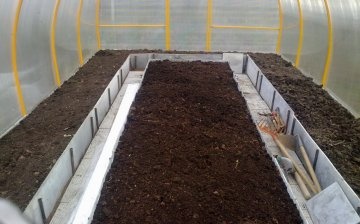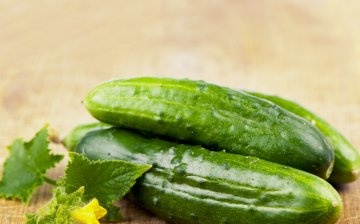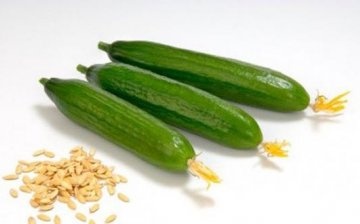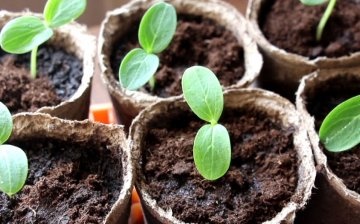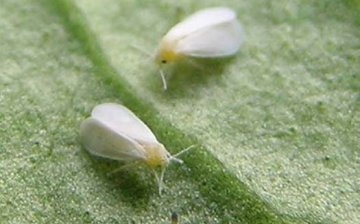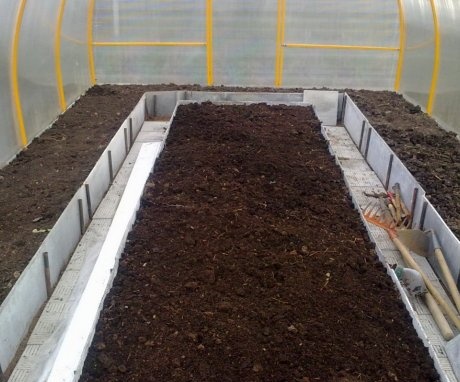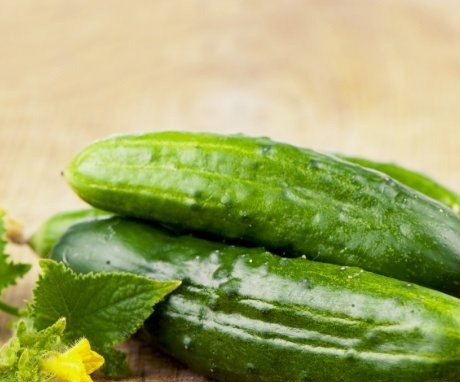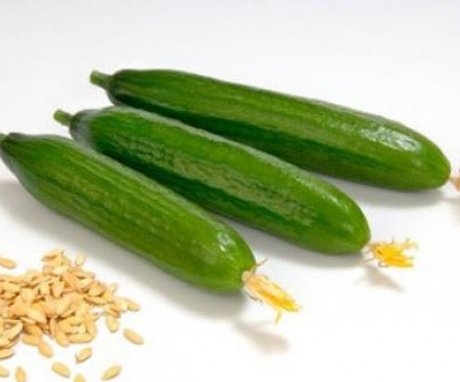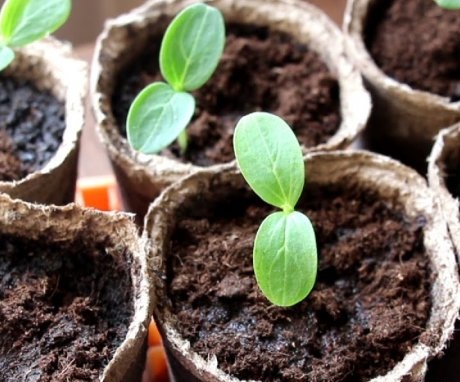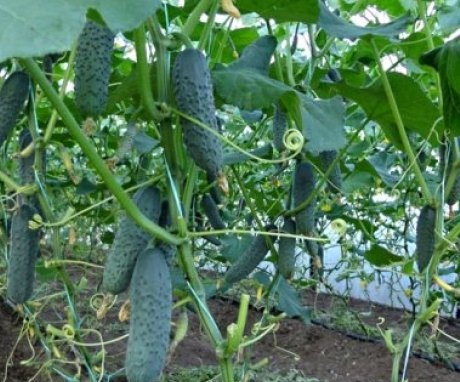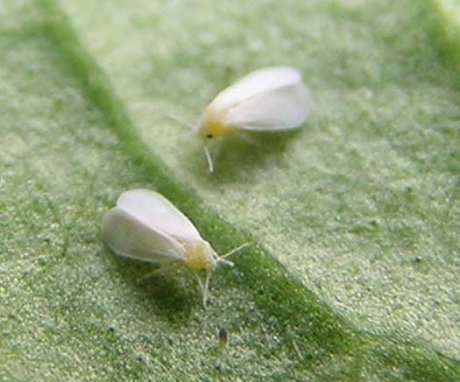Growing cucumbers in a greenhouse in winter - from planting to grooming
Growing cucumber crops in a winter greenhouse is quite relevant today. A year-round harvest of cucumbers will eliminate the need to buy vegetables in stores and markets, the quality of which is not always high, and often cucumbers simply do not have any taste.
Cucumbers - popular and versatile vegetables. They can be eaten fresh and canned, and they also have healing properties and are actively used in cosmetology and folk medicine. Therefore, the cucumber business is quite profitable if you understand all the nuances and provide year-round supplies. To achieve a good winter harvest, you need to select the right seeds and provide proper care for the cucumbers.
Content:
- Preparatory work
- The best varieties of greenhouse cucumbers
- How to choose and prepare seeds
- Growing seedlings
- Transplanting cucumber seedlings and aftercare
- The nuances of cultivating greenhouse cucumbers in winter
- Protection against diseases and pests
Preparatory work
Today you can buy ready-made greenhouses equipped with everything necessary for the cultivation of cucumber culture. But it is quite expensive and not everyone can afford it. Therefore, most gardeners prefer to buy the necessary materials and build greenhouses on their own, which will allow you to have fresh cucumbers on the table both in winter and in summer.
To get good harvests you need to stock up on:
- wire
- suitable seeds for winter greenhouses
- drugs to protect against diseases and harmful insects
- equipment to provide the necessary lighting
- ventilation system
- fertilizers
- plastic wrap
- paper or peat pots
- thermometer
- irrigation system
- garden tool
The location of the greenhouse on the site will also be of no less importance, so this issue should be approached responsibly. The area for the greenhouse should have a relatively flat surface, but a slight southward slope is also possible. You should not place the greenhouse on the leeward side of the site, and you also need to take into account how convenient it will be to conduct lighting and water supply.
When assembling a greenhouse, you need to remember the ratio of area and volume.
The internal temperature regime will depend on this and how temperature changes outside will affect it. To maintain the optimum temperature, the greenhouses are glazed, but if the climate is mild enough, then a multilayer plastic film is also suitable. When growing greenhouse cucumbers, one should take into account their sensitivity to sudden temperature changes and dependence on lighting, the lack of which provokes the development of fungal diseases.
Before planting from the greenhouse, you need to remove debris and weeds, disinfect the soil, carry out ventilation, repair work, take care of lighting, heating and irrigation systems, and also properly prepare the soil.
Cucumbers love high-quality fertile soil, which must be applied organic fertilizers... The soil is prepared in several stages:
- Before planting, the soil is fertilized with humus, peat, rotted sawdust, wood ash and nitrophobic. It is possible to apply ready-made balanced fertilizers.
- Smooth the surface and sprinkle with the mixture mineral fertilizers.
- Cover with foil for 1-2 months so that the fertilizers are absorbed.
Such manipulations are good prevention of diseases, and they also have a positive effect on the quantity and quality of the crop.
The best varieties of greenhouse cucumbers
For growing greenhouse cucumbers in winter, it is necessary to select varieties that are capable of self-pollination:
- Parthenocarpic or hybrid variety. Vegetable growers prefer: Amur, Gingu, Balovnya, Zozul, Orpheus, Courage, Cheetah, Hercules, Dynamite.
- Yielding varieties for which a short daylight hours are enough. Here preference is given to: Russian, Lagoda, Home, Olympics.
- Of salad and pickling varieties, they are often preferred: Makar, Tamerlane, Bazar, Zozula.
So that the expected harvest does not upset with the results, it is not enough to choose the right variety, you also need to choose the seed material correctly.
How to choose and prepare seeds
For the cultivation of greenhouse cucumbers, seeds that are matured for two years are most suitable, because they are able to give a good yield. Before sowing, it is necessary to sort out the seed material, removing diseased, damaged and empty ones.
To protect future seedlings from disease damage, seed material is subject to disinfection... To do this, it is necessary to place them for 12-13 hours in a cloth moistened with aloe juice, a solution of copper sulfate, boric acid or nitrophoska.
After disinfection, the seeds must be washed, placed in a damp cloth and kept at zero temperature for a week.
Experienced gardeners recommend using the seedling method when growing greenhouse cucumbers in the winter. The whole process can be conditionally divided into stages: sowing seeds for seedlings and transplanting them into the ground with subsequent care.
Growing seedlings
Given that cucumbers do not tolerate transplanting well, the sowing of seeds should be done in individual containers. The best option would be peat cups. One seed is placed in each container, burying it two centimeters into the ground.
It is recommended to cover the surface of the soil with a damp cloth to slow down the evaporation of moisture.
Tip: You should divide the seeds into several parts and plant them at intervals of two weeks - this way you can get fresh vegetables all year round.
For seed germination, you need to maintain the temperature within 24-26 degrees, and after sprouting the sprouts, it is lowered to 14-16 degrees. It should be borne in mind that the night air should be cooler than the daytime. Irrigation seedlings spend every two days and feed with organic matter.
Transplanting cucumber seedlings and aftercare
When the seedlings get stronger, they are transplanted into a greenhouse. For this, planting holes are formed in the prepared beds and peat pots with young plants are placed in them. The interval between the holes should be at least 17-20 cm, and the row spacing should be about a meter.
Care Tips:
- During the day, the temperature should be at the level of 24-29 degrees, and at night - 14-16 degrees.
- Top dressing. With the appearance of the third leaf, the first top dressing is made from urea or nitrophoska. The next fertilization will fall on the budding period. Plants are fertilized with nitrophosphate. The third top dressing is applied during the fruiting period, the plants are fertilized with potash, magnesium-containing and phosphorus fertilizers. The interval between dressings is 1.5-2 weeks.
- Before the first flowers appear, irrigation of cucumbers is carried out moderately, every five days, in order to prevent overgrowth of the green mass. During active flowering the amount of water and the frequency of irrigation are increased, irrigation is carried out 2-3 times a week.During the fertile period, cucumbers are watered abundantly once a day. The water temperature for moistening the soil should be close to the soil temperature and be 17-20 degrees. When irrigating, you need to ensure that the soil of the root zone remains dry, because this reduces the risk of root rot.
- It is necessary to monitor the condition of the plant and if wilting of the leaves is observed, it means that the plant suffers from dry air. You can save the situation urgently watering or by spraying the crop. If, during watering, exposure occurs root systemthen it is necessary hilling or adding a sand-soil mixture. The optimal time for watering is morning or evening to prevent burns during the period of active sun. Also, greenhouses should be regularly ventilated to avoid drafts.
- As it grows, a vine of cucumbers is tied to a trellis.
Nuances of cultivating greenhouse cucumbers in winter
In cultivation cucumbers in winter, you can face some difficulties:
- Decreased air humidity. To solve this problem, it is enough to spray the plants, place containers with water around the perimeter of the greenhouse, or cover the floor with damp rags.
- Temperature changes. It is necessary to constantly monitor that the air temperature is kept at the same level.
- Lack of lighting. Falls in the middle of winter. The problem can be solved with the help of artificial lighting. To do this, you need to install fluorescent lamps in the greenhouse, which are located at a distance of half a meter from the cucumber bushes.
Growing cucumbers in winter will require some perseverance from the gardener, but if you achieve your goal and get a harvest, then the family will be provided with vegetables all year round.
Protection against diseases and pests
Getting a good harvest can be prevented by diseases and pests that like to feast on the foliage and sap of the plant:
- The greenhouse whitefly feeds on plant sap and leaves behind a sticky discharge. As a result, the leaves are attacked by a sooty fungus and subsequently turn black and dry. The fight against whitefly consists of setting sticky traps and spraying plants with water, and you also need to periodically inspect the inside of the leaf plate.
- Melons aphids. Destroys flower ovaries and shoots. You can fight aphids by spraying with an infusion of red hot pepper or woody vine.
- Powdery mildew - the appearance of white bloom on the leaves. The disease is characterized by rapid spread. The fight against the disease consists in the destruction of the affected parts of the plants, as well as treatment with infusion mullein or pollination with sulfur.
- Brown spot appears when there is excess air humidity. Brown or olive spots with oozing liquid protrude on the leaves. This disease spreads very quickly and ruins crops within a week. When the first symptoms appear, you need to stop watering the plantation for five days, conduct airing, but avoid hypothermia. The plants are sprayed with fundozol every three days.
- Root rot. It is often found in soils where cucumber crops were the predecessors. And also the disease provokes cold water during watering and sudden changes in air temperature. The fight against the disease is carried out with the help of a copper sulfate solution or wood ash, which is applied to the bare stem of the plant. Affected plants should be removed and destroyed.
- Gray rot. In the axils of the leaves, grayish spots with mucus are formed. The reasons may be poor-quality airing, excessive thickening of the plantings and watering with cold water. A mixture of copper sulfate and ash, which is sprinkled on the affected areas, helps to fight the disease. If this does not help, then the plant should be dug up and destroyed. You can also use chemicals.
- White rot. A white bloom forms on the cucumber vine and fruits.Excess moisture is the cause of the development of the disease. When the first signs of the disease are found, diseased plants and their healthy neighbors should be removed, and the sections should be covered with copper sulfate or lime.
- Black mold. Dark spots form on the leaf plate and the plant gradually dries up, and the leaves are covered with a black cobweb-like bloom.
To avoid the development of diseases and the appearance of pests, you need to follow the rules of agricultural technology, as well as disinfect greenhouses and soil.
More information can be found in the video:




